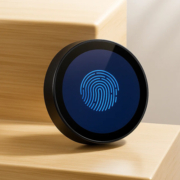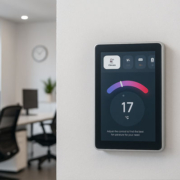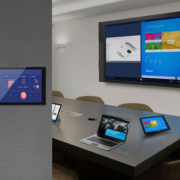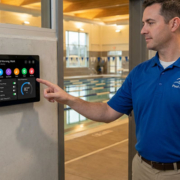What You Need to Bridge Zigbee with Home Assistant
1. Home Assistant Instance
You can install Home Assistant on:
- Raspberry Pi (HA OS image)
- Home Assistant Blue or Yellow
- Docker on a server
- Virtual Machine (e.g., VirtualBox, Proxmox)
2. Zigbee Coordinator
To communicate with Zigbee devices, you need a Zigbee USB dongle or gateway, such as:
- Sonoff Zigbee 3.0 USB Dongle Plus
- ConBee II
- SkyConnect
- CC2652-based dongles
These coordinators plug into your Home Assistant server and act as the central node in your Zigbee mesh.
3. Zigbee Integration: ZHA or Zigbee2MQTT
- ZHA (Zigbee Home Automation): Native Zigbee integration for Home Assistant.
- Zigbee2MQTT: A powerful alternative with more control, requires an MQTT broker (like Mosquitto).
Step-by-Step Guide to Bridge Zigbee with Home Assistant
Step 1: Install Home Assistant
Download and flash the Home Assistant OS onto your device (e.g., Raspberry Pi) and follow setup instructions at https://www.home-assistant.io/installation.
Step 2: Plug in Your Zigbee Coordinator
Insert your Zigbee USB dongle into the Home Assistant server.
- If using Home Assistant OS: It should be auto-detected.
- For supervised/docker installs: Ensure USB permissions are correct.
Step 3: Add Zigbee Integration
Option A: ZHA
- Go to Settings > Devices & Services > Add Integration
- Search for ZHA
- Select the correct serial port (e.g.,
/dev/ttyUSB0) - Configure the integration and start pairing devices
Option B: Zigbee2MQTT
- Install Mosquitto MQTT broker via Add-ons
- Install Zigbee2MQTT via Add-ons or Docker
- Configure the
configuration.yamlto match your coordinator - Use the Zigbee2MQTT web UI to pair and manage devices
✅ Step 4: Start Pairing Zigbee Devices
Put your Zigbee device into pairing mode (usually by holding a button for 5–10 seconds), then use ZHA or Zigbee2MQTT to add the device to your mesh.
Portworld Smart home Control Panels for Home Assistant + Zigbee Integration
To complete your setup, consider using a dedicated smart control panel to interact with your Home Assistant dashboard.
Why Portworld Touch Panels?
Portworld offers Android-based touchscreen smart panels (4-inch, 5-inch, and 10.1-inch models) that integrate seamlessly with Home Assistant and Zigbee environments.
Key Features:
- Android OS: Perfect for running Home Assistant dashboards via browser or Fully Kiosk Browser
- PoE Support: Simplifies installation with a single cable for power and data
- Custom UI/UX: Tailor your smart home dashboard for lighting, sensors, and automation scenes
- Multi-protocol Support: Can act as a bridge for Zigbee, Wi-Fi, and other smart ecosystems
- Voice Assistant Ready: Compatible with Google Assistant and Alexa integrations via Home Assistant
By installing a Portworld panel in key areas (living room, hallway, entryway), you can interact with Zigbee devices via Home Assistant using a modern, wall-mounted interface.
Advanced Use Cases
Here are some powerful use cases once Zigbee is connected to Home Assistant:
- Automate lights based on Zigbee motion sensor activity
- Monitor door/window sensors for real-time alerts
- Control Zigbee thermostats based on time or occupancy
- Create room scenes that combine lights, blinds, and music
- Use Portworld panel to trigger Home Assistant scripts with a tap
Troubleshooting Tips
- Ensure your Zigbee USB dongle has enough signal range—use a USB extension cable if needed
- Avoid placing the dongle near Wi-Fi routers (can cause interference)
- Repair devices if they become unavailable after reboot
- Back up your Zigbee network frequently (especially with Zigbee2MQTT)










